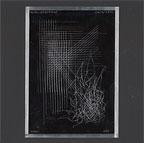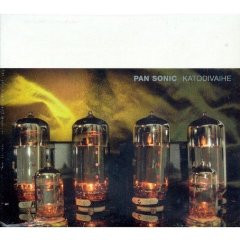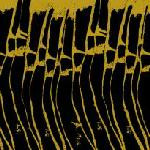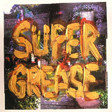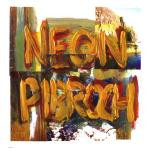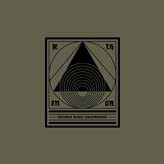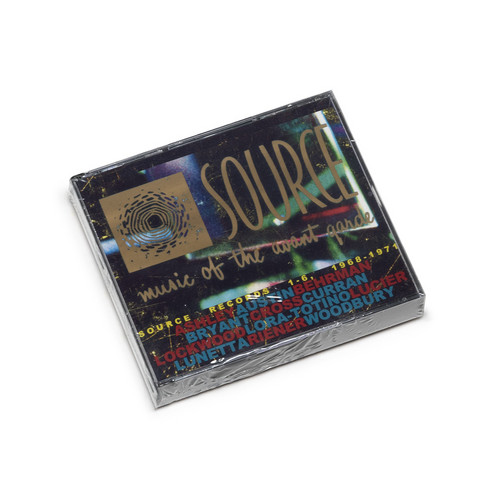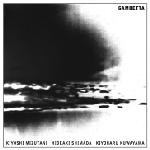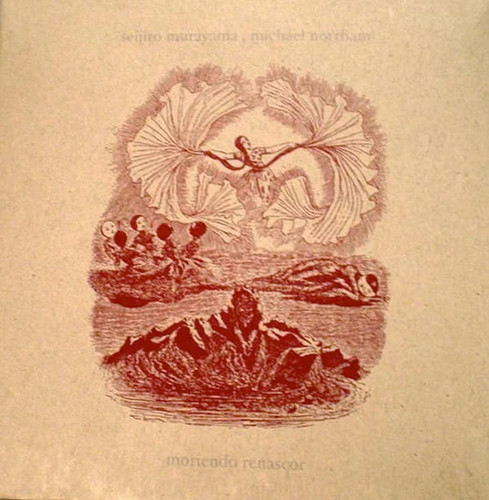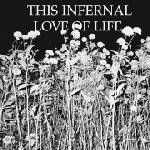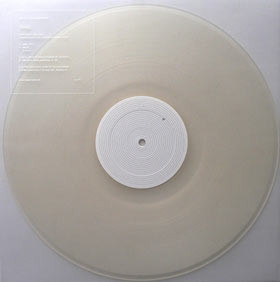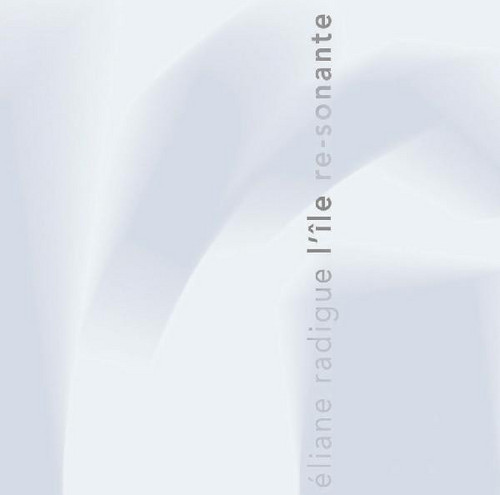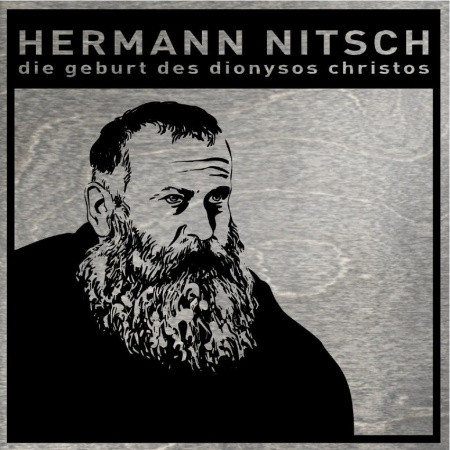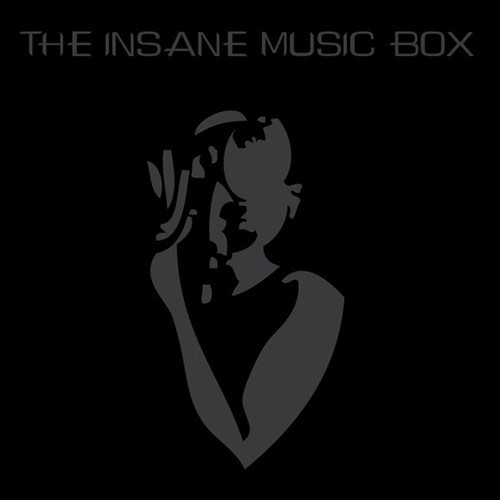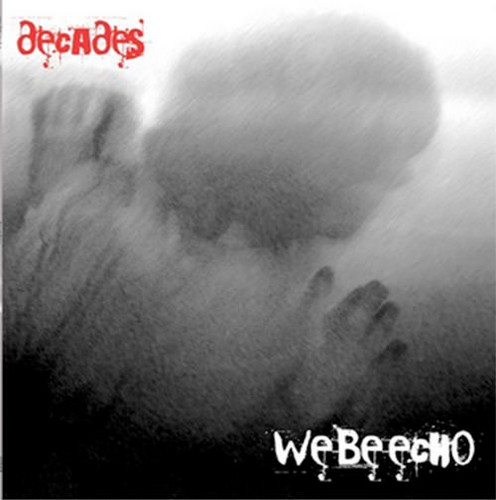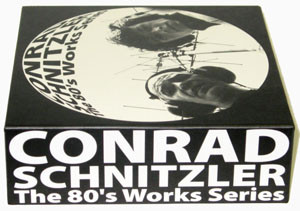Eskalation
BOXED deluxe version. and i mean deluxe. a thick lp boxed-set box with a hand-etched coated-metal “badge” contains the regular edition lp/sleeve (below) plus two cd-rs of interviews & audio by mr. bösmann and a veritable king’s random in leaflets, posters, flyers, dossiers, dockets, etc - 100 copies only scalating drone sounds like a mixture of cluster/kluster and ktl or sunn o))) with vocal parts in the style of tazartes or tibetan monks. the 20 minutes long title track sounds like a swelling v…
Katodivaihe/Cathodephrase
Pan Sonic are Mika Vainio and Ilpo Väisänen, both Finnish nationals now based in Berlin. Katodivaihe is Pansonic's first release for Blast First Petite since "sidestepping" (at their own request) from the newly EMI-owned Blast First/Mute Records for whom they have recorded since 1995. Their last release for them was 2004's 4CD release -- the musically massive Kesto box set. These 2006 recordings that make up this album feature the continued extension and development of their trademarked warm ele…
Ghost Of A Plane Of Air
2006 release ** Keenan Lawler has spent the last 25 years developing his own personal sound world, constantly pushing himself in new directions and developing new techniques, while remaining completely focused on his vision. His experiments on 1930 national resonator guitar are the stuff of legend you sometimes hear from town to town by someone who may have had the good fortune to witness one of his performances. Words such as cosmic, monolithic and deeply american have been used to describe the…
Joy Shapes
Double LP version, gatefold sleeve. To say that the words 'unique' and 'singular' are over-used in describing music is to state the obvious. To apply these words to the sounds created by the various duo/trio configurations of the Texas group Charalambides over the last decade plus would be understatement. To be sure there are numerous antecedents to their music; to deny this of any artist's work would be akin to saying that they are deaf. But they have surely broken new ground in the primitive/f…
Super Grease
Super Grease is a limited edition of 500 vinyl-only release from Vibracathedral Orchestra/Sunroof!/A Band member, Neil Campbell. This is a companion release to Astral Social Club's Neon Pibroch CD, also on Important.
Astral Social Club
With this release the VHF catalog moves into triple digit territory and the label is celebrating with the first official album by Neil Campbell's (Vibracathedral Orchestra) genre-destroying Astral Social Club unit. Following a series of instantly sold-out limited edition CDRs, Campbell agreed to select, edit and remix a collection of tracks for wider release from the group's rather exclusive catalog. VHF100 is a dense mega-mix of continually peaking sound-flow. Working a tricky hybrid ground bet…
Neon Pibroch
Neon Pibroch is dedicated to the memory of Textile Records founder, Benoit Sonnette. Astral Social Club is the current project of Neil Campbell, formerly of Vibracathedral Orchestra, Sunroof!, A Band and many more. Campbell has been active since the early '80s, and The Wire magazine has said that, along with his friends Richard Youngs and Matthew Bower, he 'provided the map co-ordinates for much of what passed for a post-punk UK underground during most of the '80s and '90s.' Campbell's approach …
Faking Gold And Murder
Faking Gold and Murder is the third Earth-shattering full-length by Vincent De Roguin (Shora), Stephen O'Malley (Sunn0))), KTL) and Daniel O'Sullivan (Guapo). This time, the core trio is joined by percussionists Nicolas Field and Alex Babel, as well as renowned guitarist Alexander Tucker and the inimitable David Tibet. AEthenor's heaviest outing yes is driven by a weighty low-end and the full fury of Babel and Field's free-wheeling drums. The band's electronics, guitar, Rhodes, and organ ride wa…
Betimes Black Cloudmasses
Betimes Black Cloudmasses is the highly-anticipated second album from Vincent De Roguin (Shora), Stephen O'Malley (SUNN0))), KTL), and Daniel O'Sullivan (Guapo). Like their genre- and audience-confounding debut Deep In Ocean Sunk the Lamp of Light, Betimes is an atmospheric, constantly changing piece that encompasses a mind-boggling array of different performance and processing techniques. The deeply psychedelic and moving results present a soundstage that is continually evolving, with new eleme…
Source: Music Of The Avant Garde - Source Records 1-6, 1968-1971
Astoundingly great collection of some of the classic pieces from the 60s avant-garde / live electronic music wave presented here as originally issued (in chronological order) by larry austin & stanley lunetta via their “source: music of the avant garde” magazine & 10” record series between 1967 and 1973 .... Source Records 1 and 2 with Robert Ashley: The Wolfman (1964). David Behrman: Wave Train (1966). Larry Austin: Accidents (1967). Allan Bryant: Pitch Out (1967). Source Records 3 and 4 with A…
Gambetta
Kiyoharu Kuwayama: contact microphone, hand made electronics. Hideaki Shimada: violin, live electronics. Kiyoshi Mizutani: feedback, drumstick. Recorded at Gambetta, Tokyo, on November 18th, 2001. Remix by Kiyoharu Kuwayama, on May 04th, 2008.
Moriendo renascor
Between 2003 and 2004 - Michael Northam and Seijiro Murayama met a few times in Switzerland and France. One artifact of their meetings, 'They Stood Around and Watched' a 20 min CDR was published by universinternational. A more comprehensive and extended document of these meetings has finally made its way in the form of 'Moriendo Renascor'. Seeded from composed recordings taken in Lisbon, Portugal and
Astoria, Oregon. Northam offered heavily mixed sources during these meetings. Selections were ma…
This Infernal Love Of Life
A visionary showcase of Sweden's finest artists, paying tribute to the mighty currents of LIFE within us all. This album was originally released as an LP by Topyscan in Stockholm in 1989, in a limited, hand-numbered edition. Included was a booklet with texts, artwork and photographs by the artists. Release date is 15th July 2008. Limited edition of 500 copies in jewelcase. The idea, if any, was to invite artists working with sound and experimental music to illustrate the philosophical, emotional…
Vox Tinnitus
Long deleted, few available: objects and phenomena commonly viewed as "static" often appear to be lively processes or life-forms in a different scale, dimension or system of coordinates. it is possible to observe known "hidden" activities (such as planetary motion, cellular life or electro-magnetic disturbances) by using an appropiate technique. however, these processes can also be perceived as anomalies in a state of enhanced awareness or hyper-sensitivity. sometimes they are fun, too.---------…
Revep
LAST COPIES Now deleted, this is the super-limited transparent vinyl. Revolving around a collaborative new arrangement of Sakamoto's classic 'Merry Christmas Mr. Lawrence', this third outing for Carsten Nicolai and Ryuichi Sakamoto has been once again packaged and delivered with utmost attention to detail from the quite remarkable Raster Noton imprint. Designed to accompany their extensive tour through much of Asia and Europe this Summer, 'Revep' is another indispensible record from two absolute…
L'ile Re-Sonante
Back in stock, long time deleted "For the second time this year it falls to Eliane Radigue to launch a new French label – and if the people at Shiiin follow the path traced with this release we can expect great things. L'île re-sonante reaches the same intensity level as Radigue's earlier glories. Inspired by a vision of her face reflected in the water of a lake, this single movement opus starts with a gradual oscillation throbbing its way through silence, wave cycles progressively concentrating…
Die Geburt des Dionysos Christos
RESTOCKED! Already sold out at the source, these are the very last copies i can offer so far - possibly, this is by far one of the best recordings ever released by the prolific Viennese artis "VOD is very proud and honoured about this release. Excellent minimal and drone recording of Hermann Nitsch performed on the Brucknerorgel linz as well as at the Organ at his private Castle in Prinzendorf at the Zaya, Austria, both in 1986. The original has been released on edition hundertmark in a strictl…
Insane Music Box
Insane Music, run by Alain Neffe, has been one of the greatest and biggest Tape-Labels promoting the international cassette-culture of the 80's. Labelrunner Alian Neffe got approached by VOD to compile a 4Lp Box with 7" of his band-projects I SCREAM, BENE GESSERIT, SUBJECT, HUMAN FLESH and PSEUDO CODE. Alain Neffe looked deeply into his archive and found many oscruities and unreleased material in combination with 80's tape-classics and compuled this wonderful Box-Set. All Box-Sets will also cont…
Decades
This Lp of We Be Echo (Kevin Thorne) offers 15 extremely rare tunes from his superb 80’s Tapes “Cezi Eva” with tracks from 81-83 and the two Tapes on Mystery Hearsay “Nothing Left“ and “Pressure Point” released in 85 as well as 80’s compilation-contributions. A Must-Buy for every seious Minimal-Electronics-Listener.
The 80\'s Works Series
Astonishing reissue!! Conrad Schnitzler has been an institution in the German electronic music scene for thirty years. For a complete electronic muisc journey of Conrad Schnitzler on eighties. The Japanese label Captain Trip proudly presents "The 80's Works Series" 7CD box set, which featuring title are in following:CTCD-637 CONRAD & GREGOR SCHNITZLER / Conrad & SohnGreat split album by Conrad Schnitzler and his son, Gregor Schnitzler! The original LP was pressed 500 copies in 1981. Including p…
